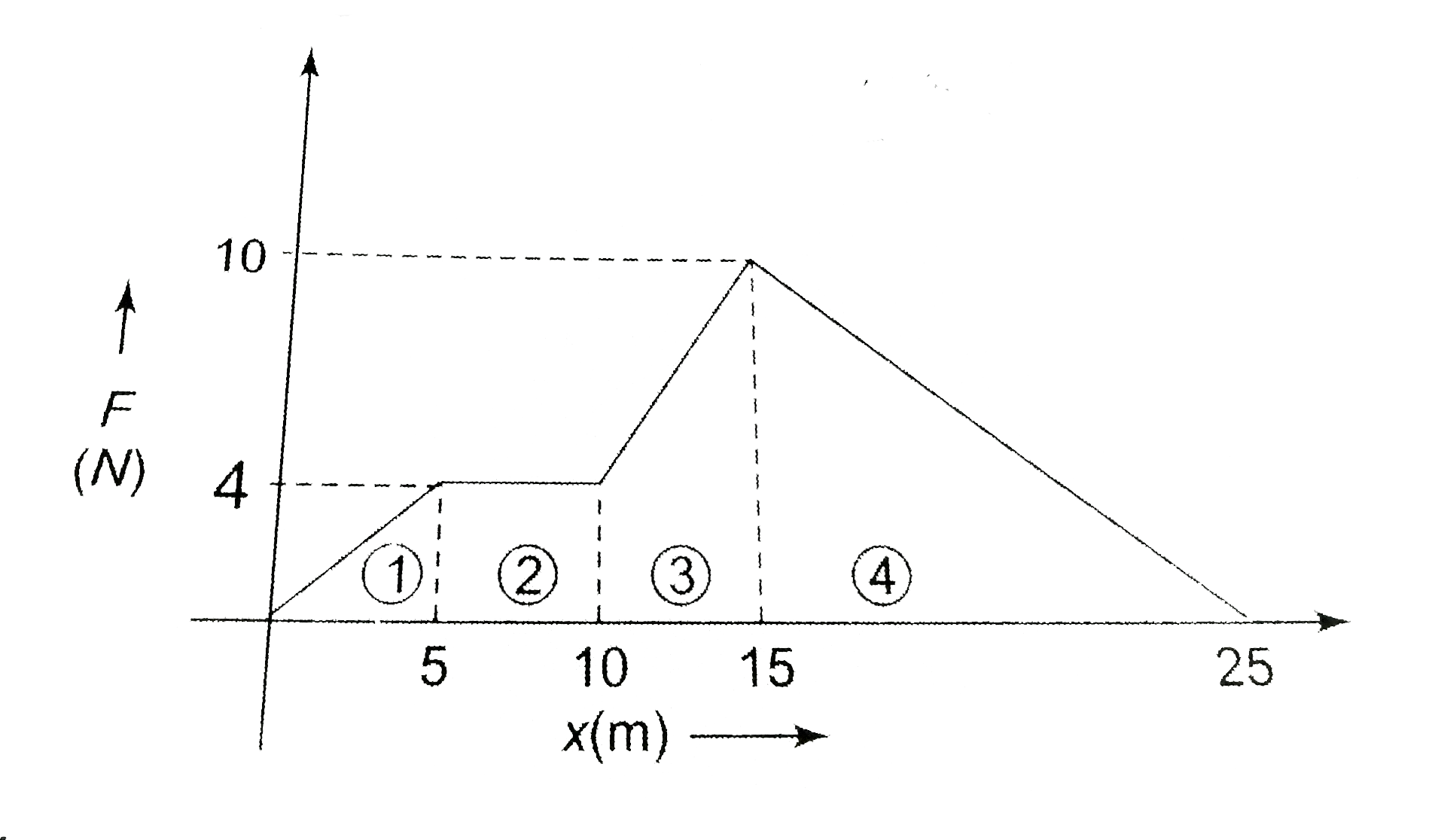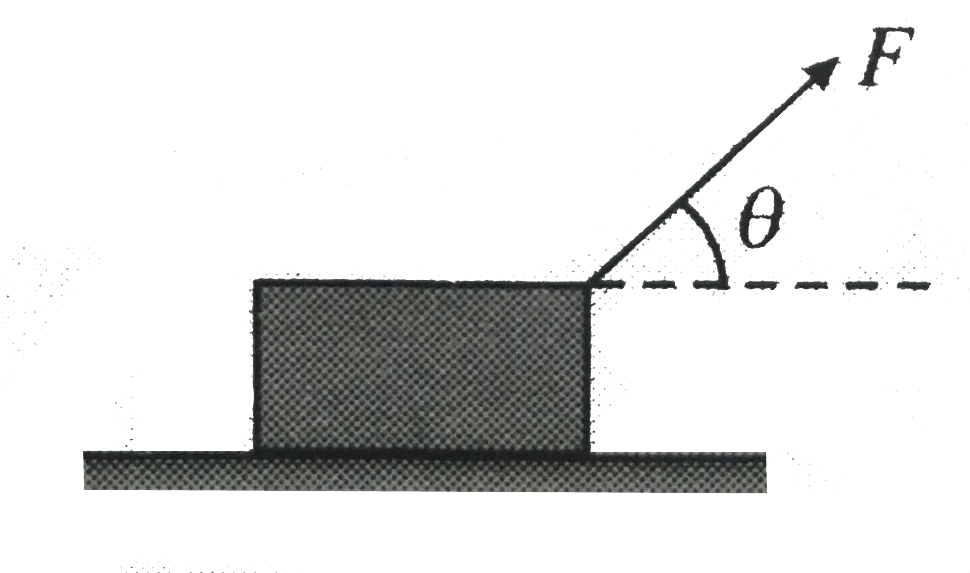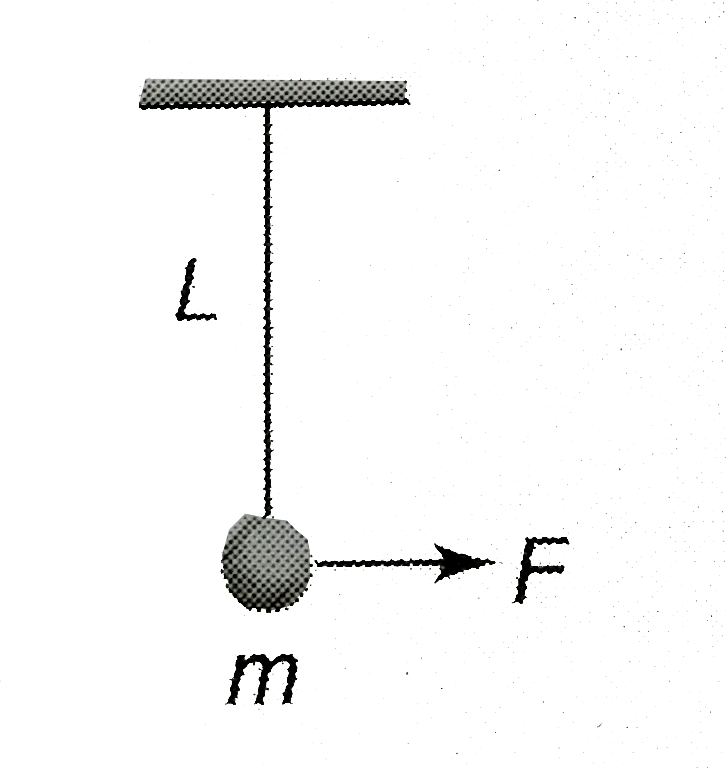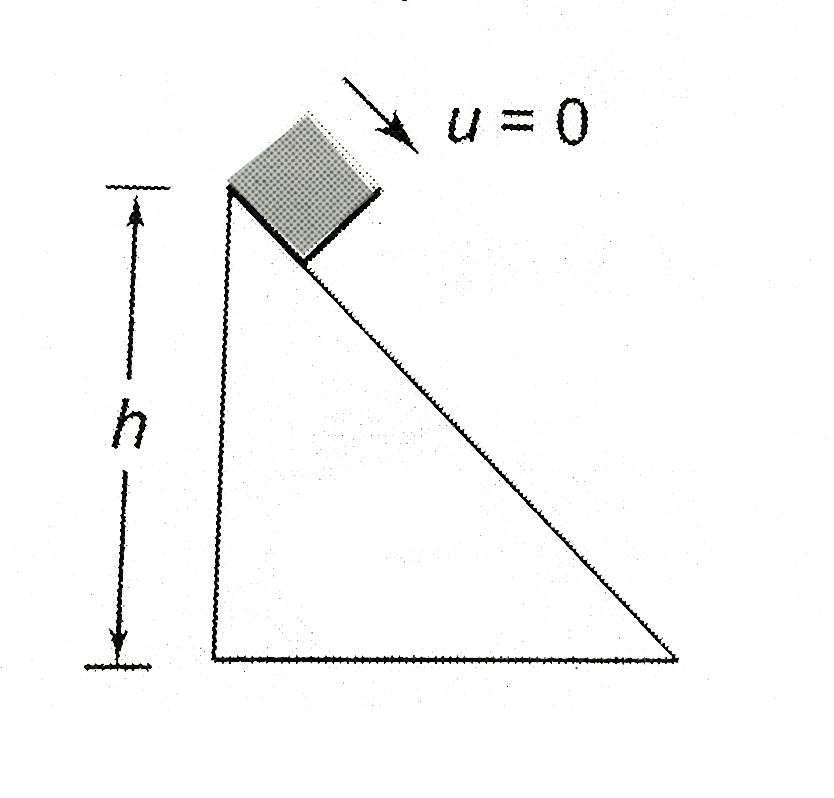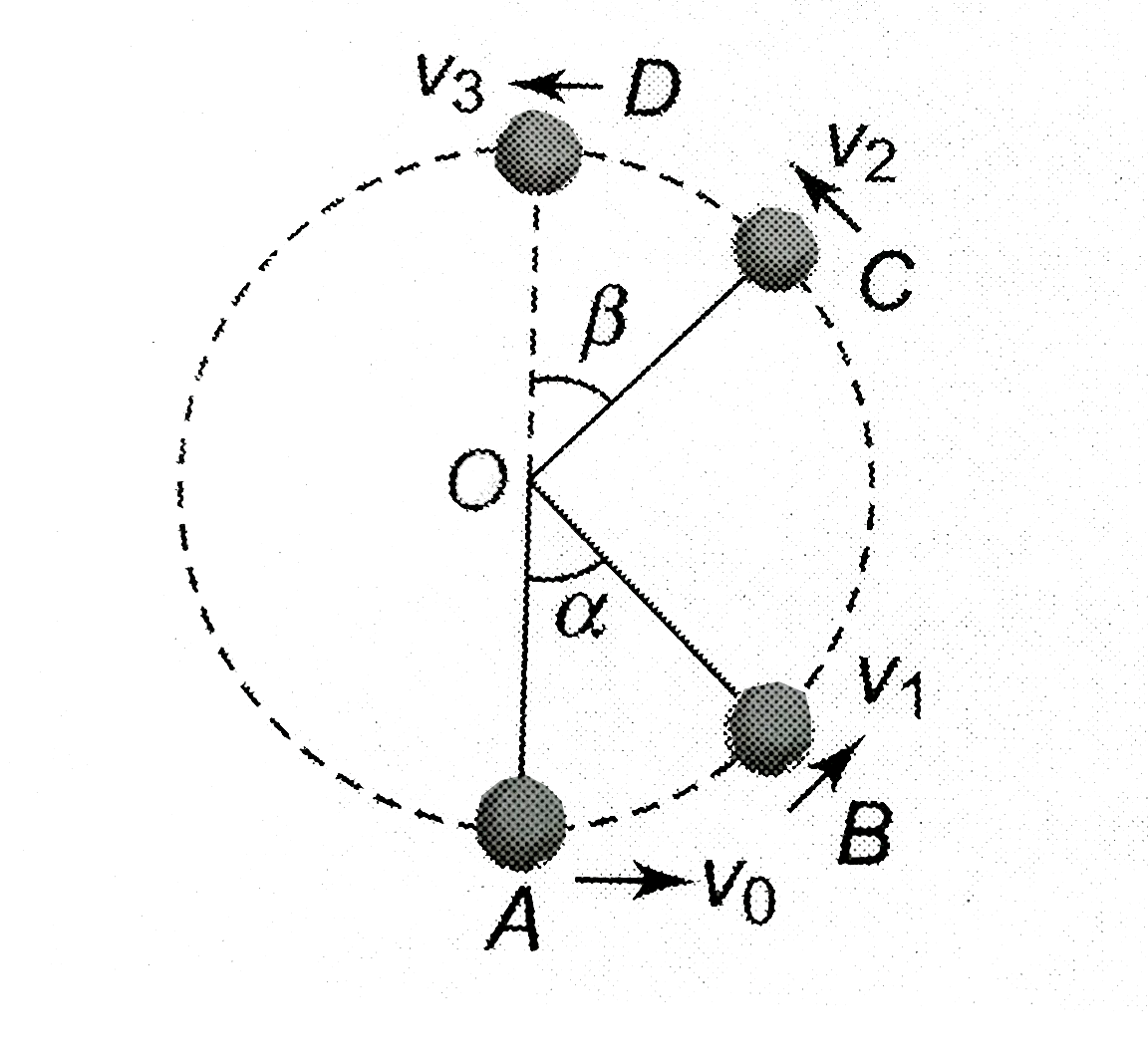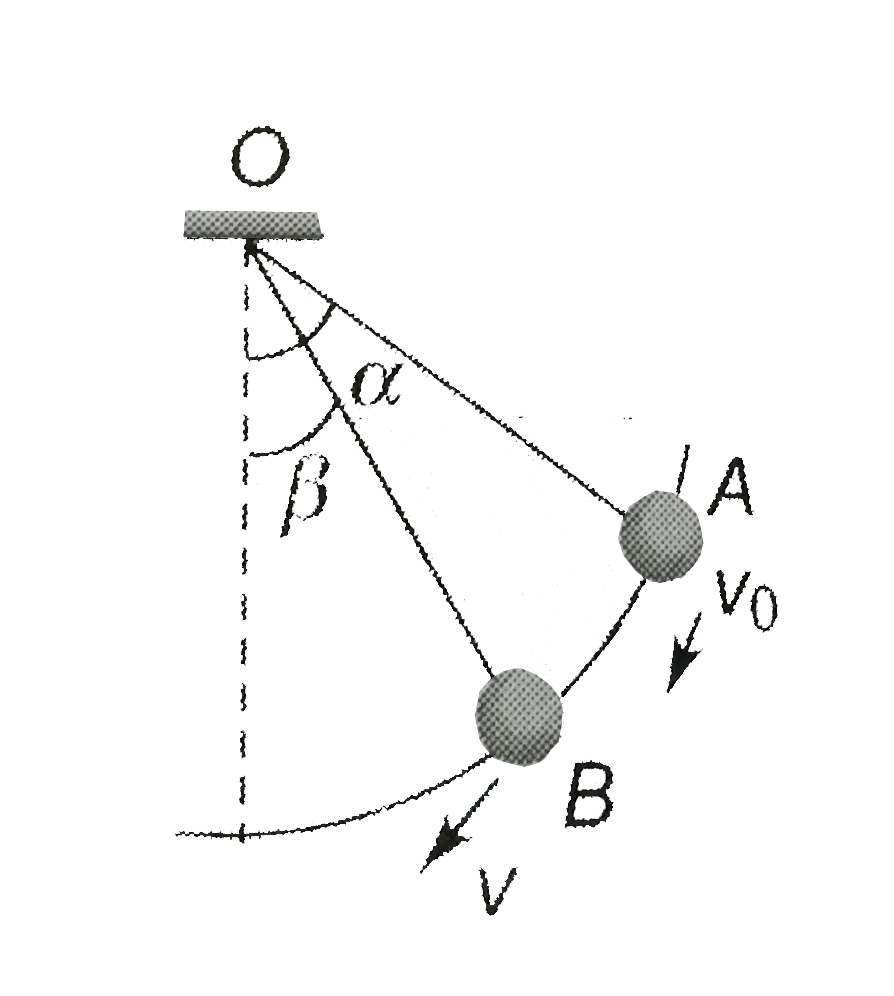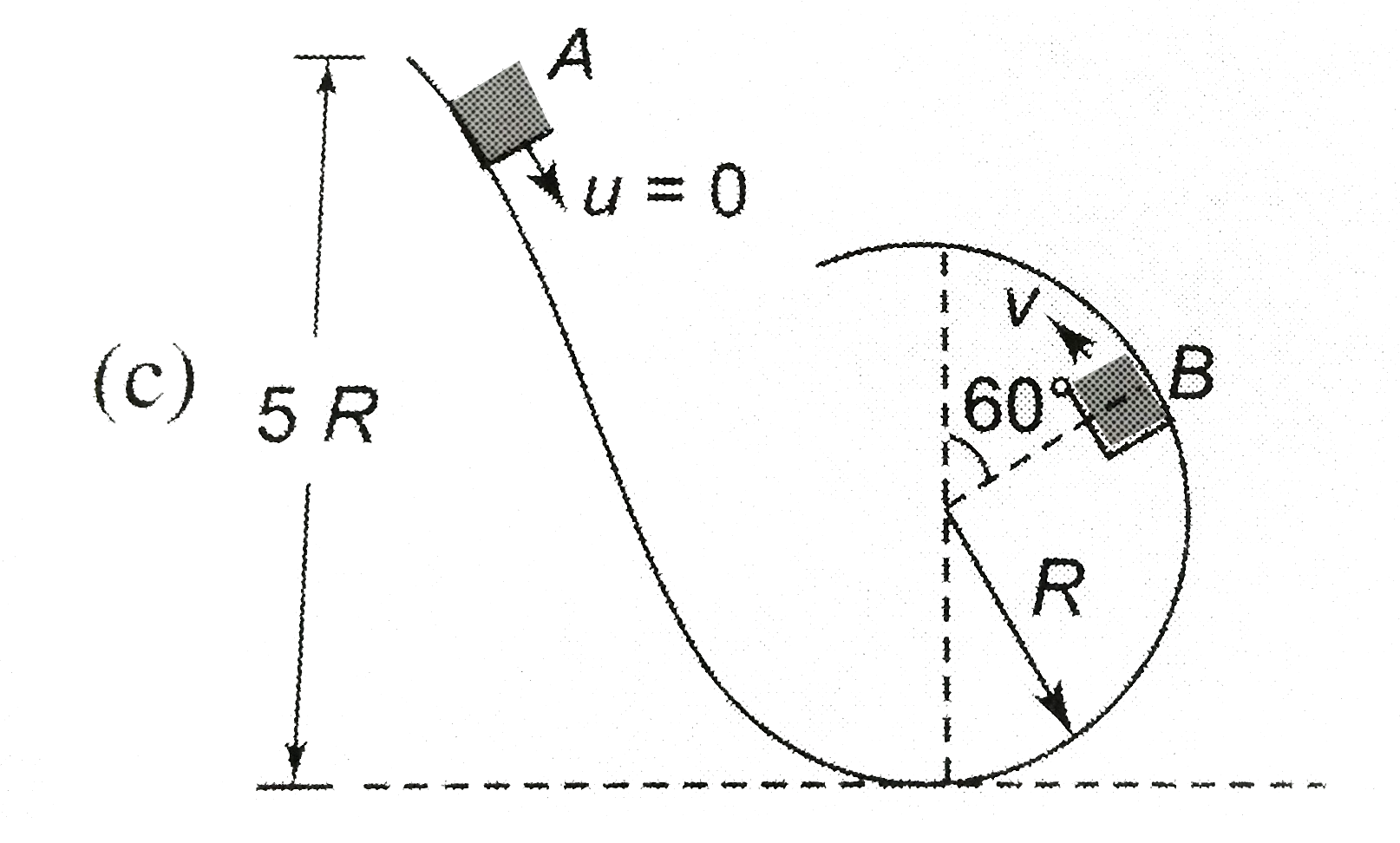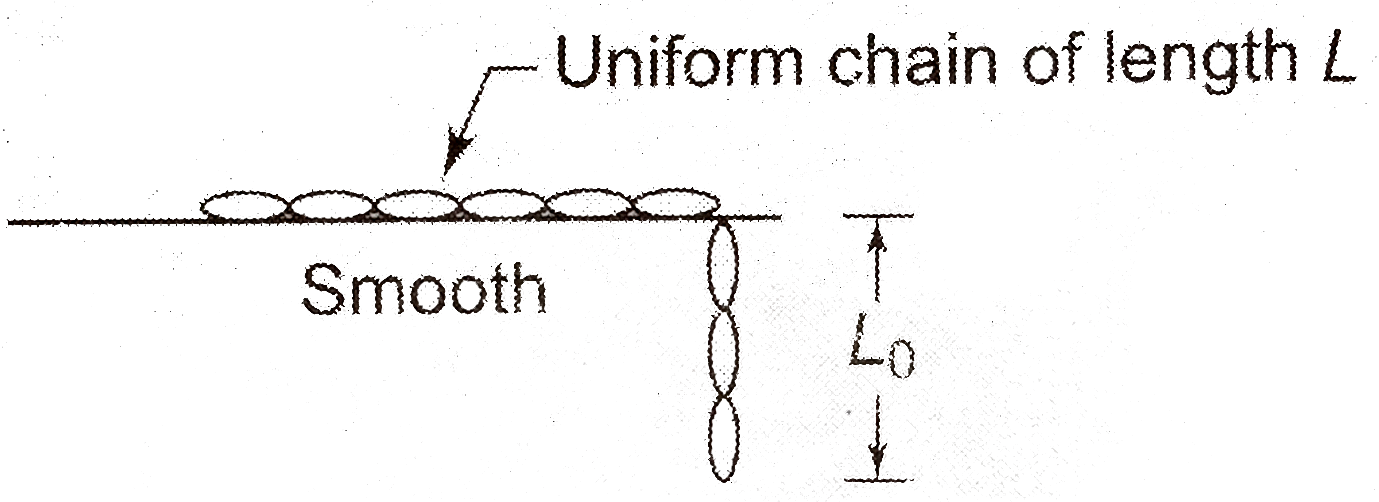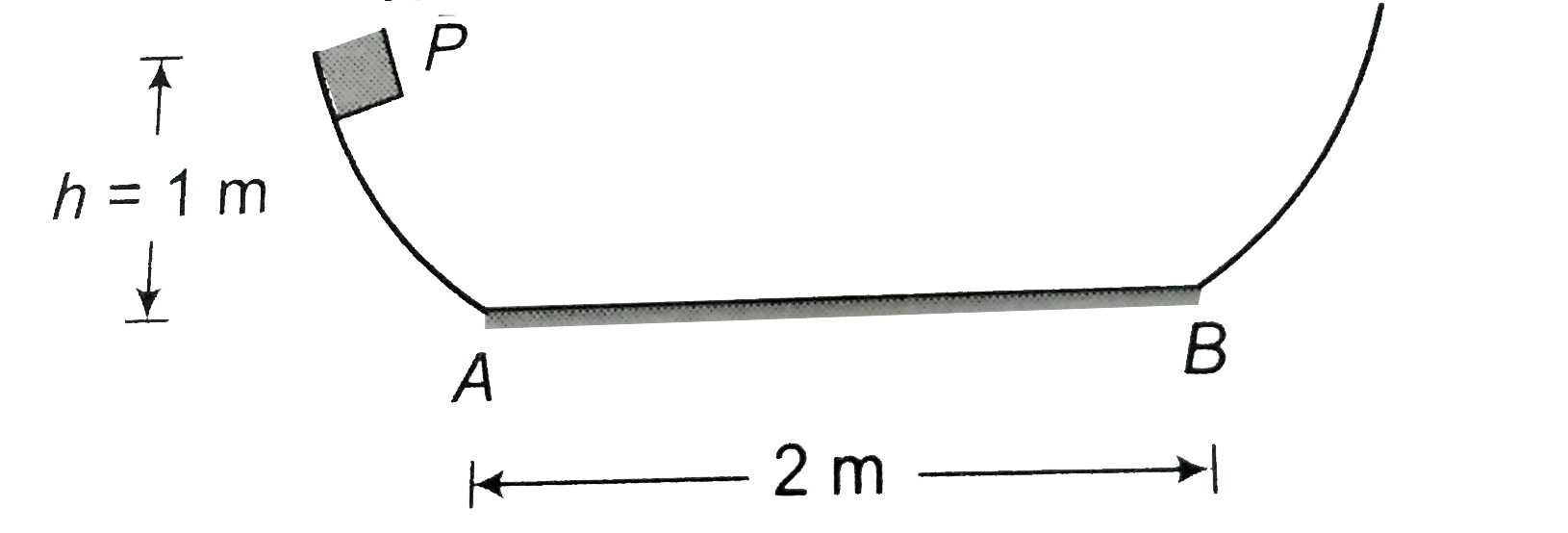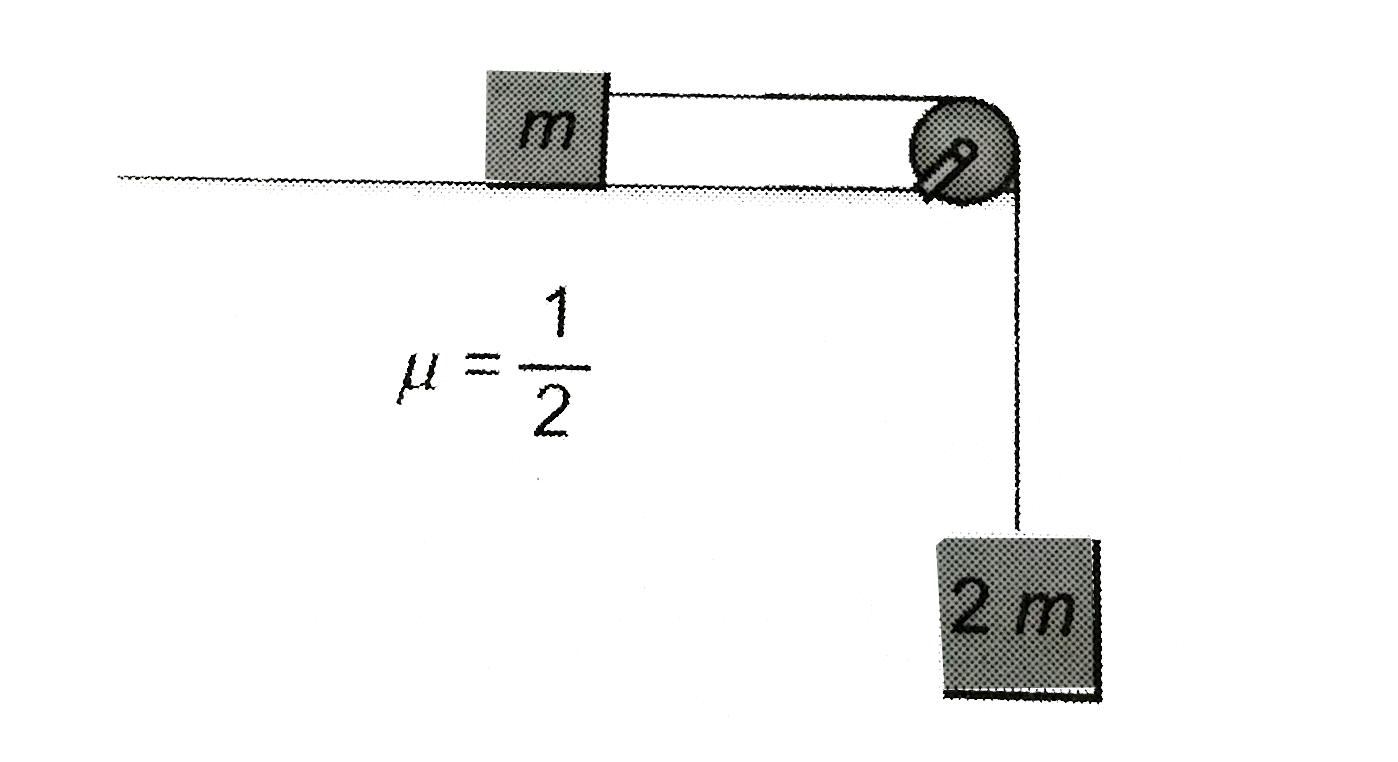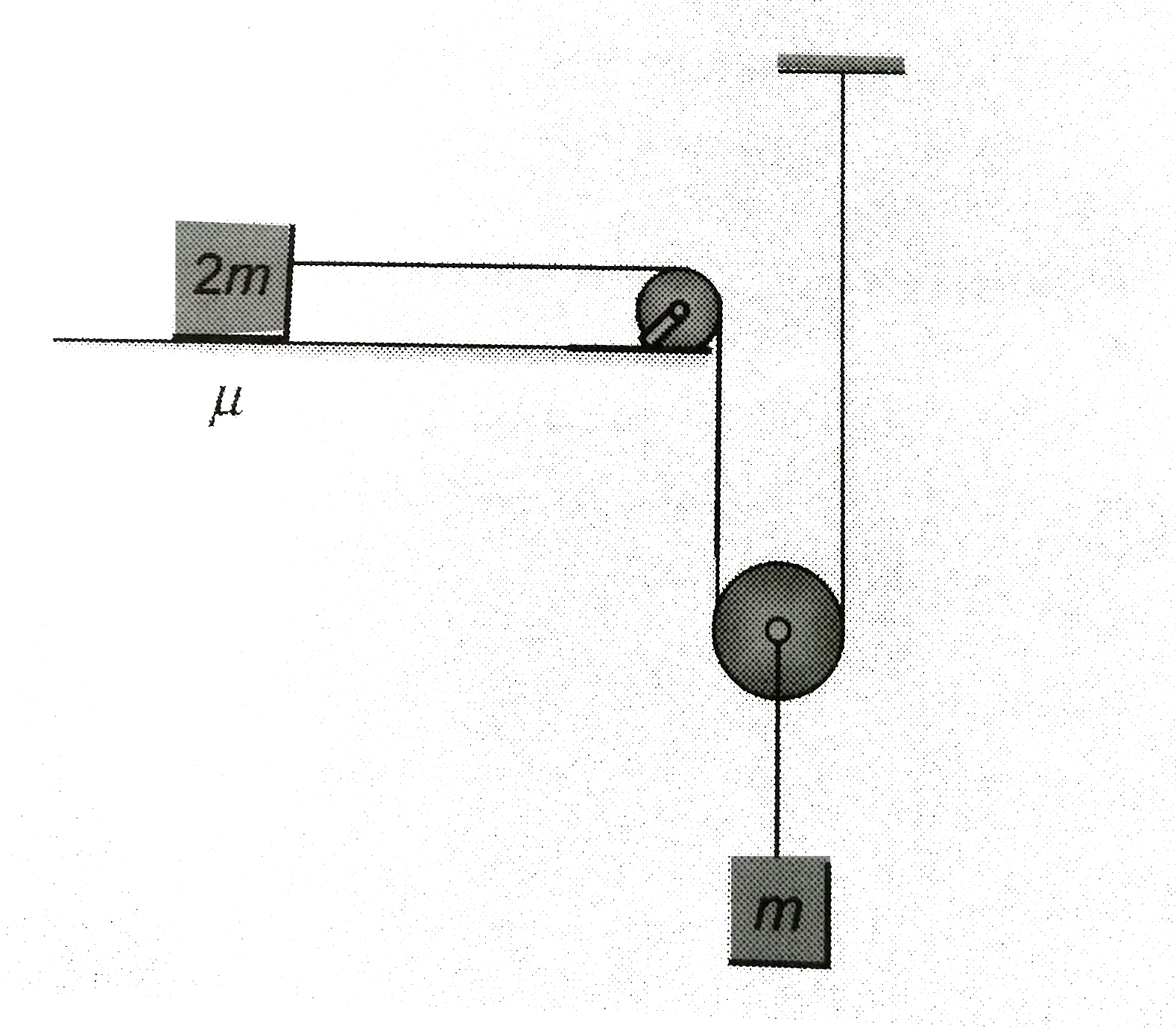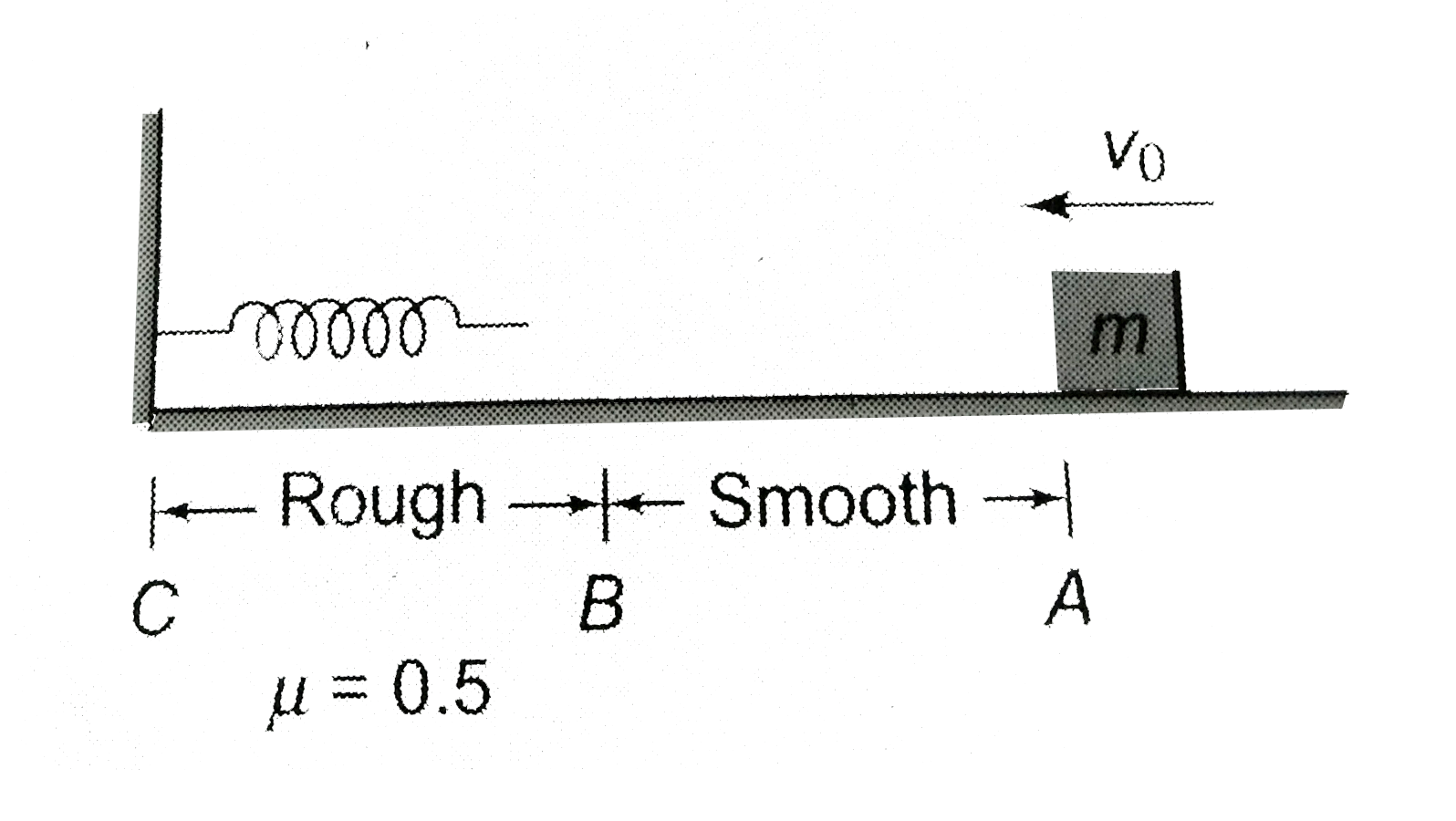EXAMPLES from CP SINGH PHYSICS Chapter 21 WORK, ENERGY AND POWER for Class 11
| Class 11 | PHYSICS |
| Chapter | WORK, ENERGY AND POWER |
| CP SINGH PHYSICS | EXAMPLES |
| Medium | English |
| Academic Year | 2023-2024 |
Question 10

Consider the situation as shown in the figure. A constant horizontal force 45 N acting on the lower blocks produces an acceleration 4(m)/(s2), the two blocks always move together. Find (a) coefficient of friction between the bigger block and the horizontal surface (b) friction acting on the upper block and (c ) work done by the friction on the upper block during a displacement 2m of the system. View SolutionQuestion 28
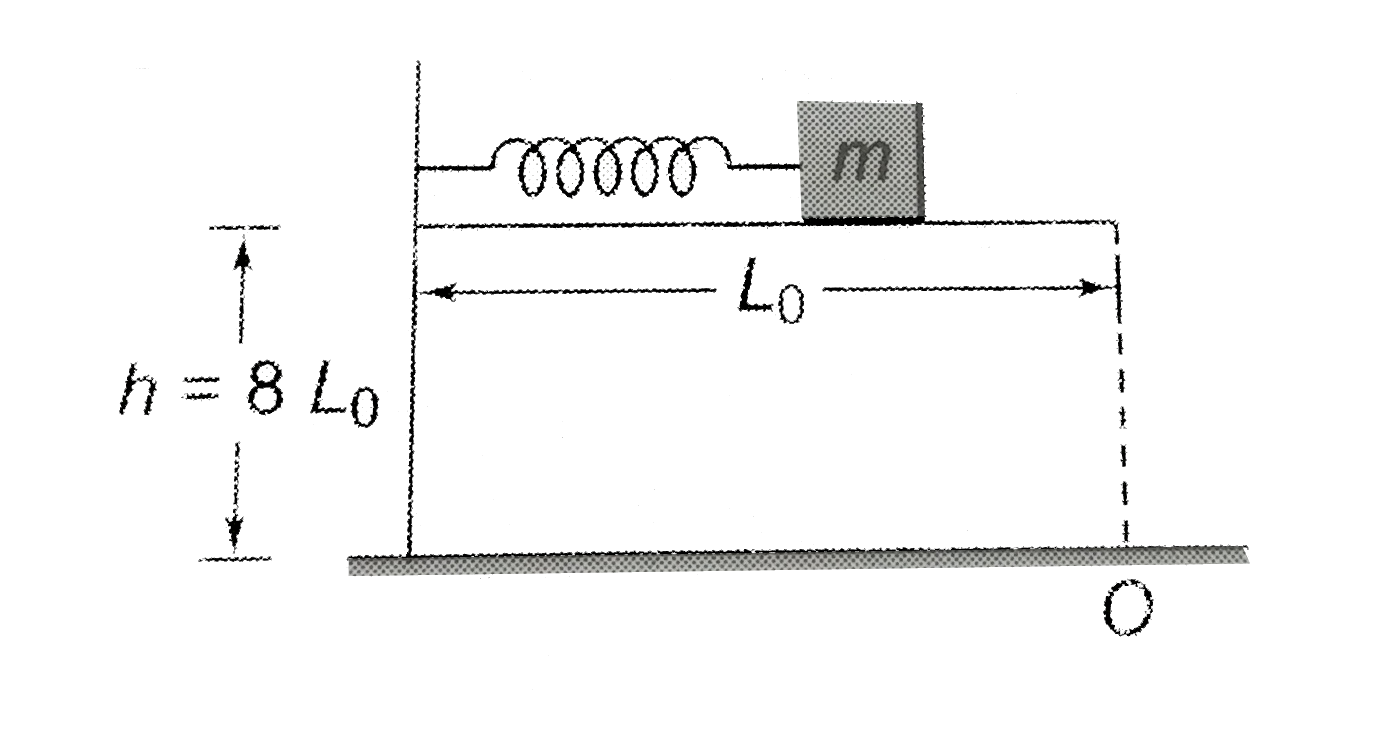
A block of mass m is pressed against a horizontal spring fixed at one end to compress the spring through (L0)/(2). The natural length of the spring is L0 and spring constant k=(mg)/(L0). When released, the block moves horizontally on smooth surface till it leaves the spring. At what horizontal distance from O it strikes the ground.View SolutionQuestion 29
In figure, the stiffness of the spring is k and mass of the block is m. The pulley is fixed. Initially, the block m is held such that the elongation in the spring is zero and then released from rest. Find:
a. the maximum elongation in the spring.
b. the maximum speed of the block m. Neglect the mass of the spring and that of the string. Also neglect the friction.
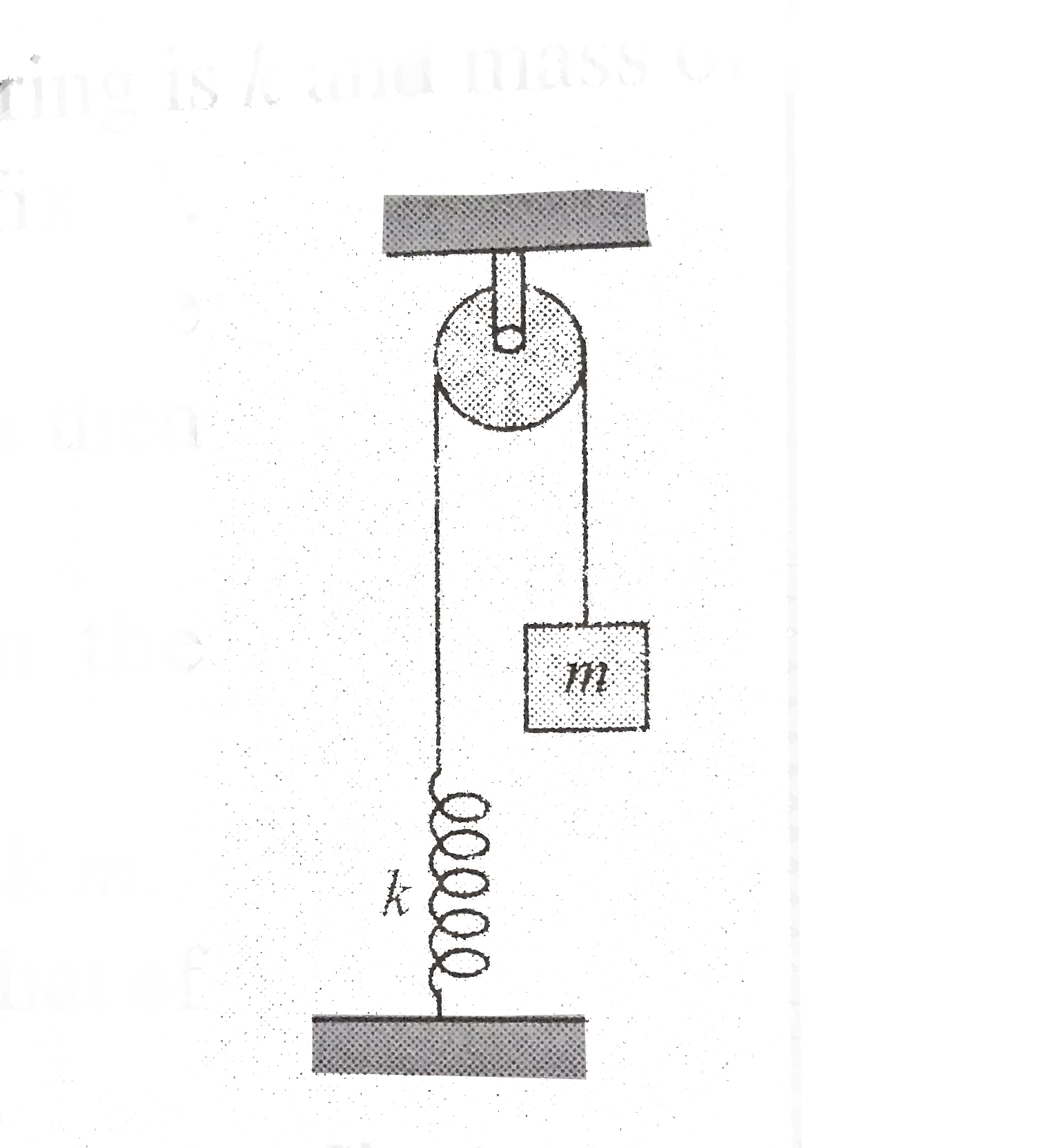 View Solution
View SolutionQuestion 31
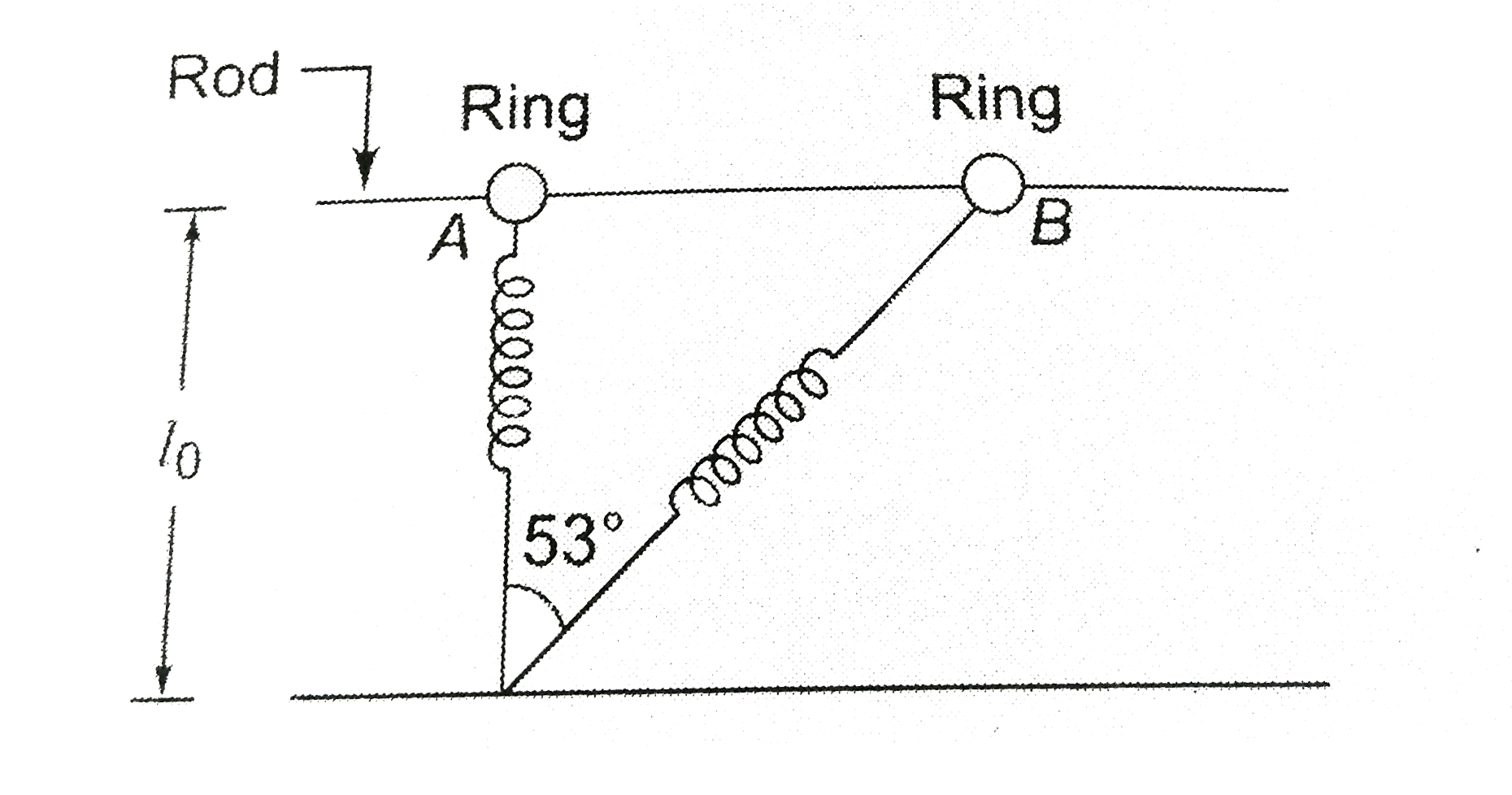
A ring of mass m is attached to a horizontal spring of spring constant k and natural length l0. The other end of the spring is fixed and the ring can slide on a horizontal rod as shown. Now the ring is shifted to position B and released Find the speed of the ring when the spring attains its natural length.View SolutionQuestion 36
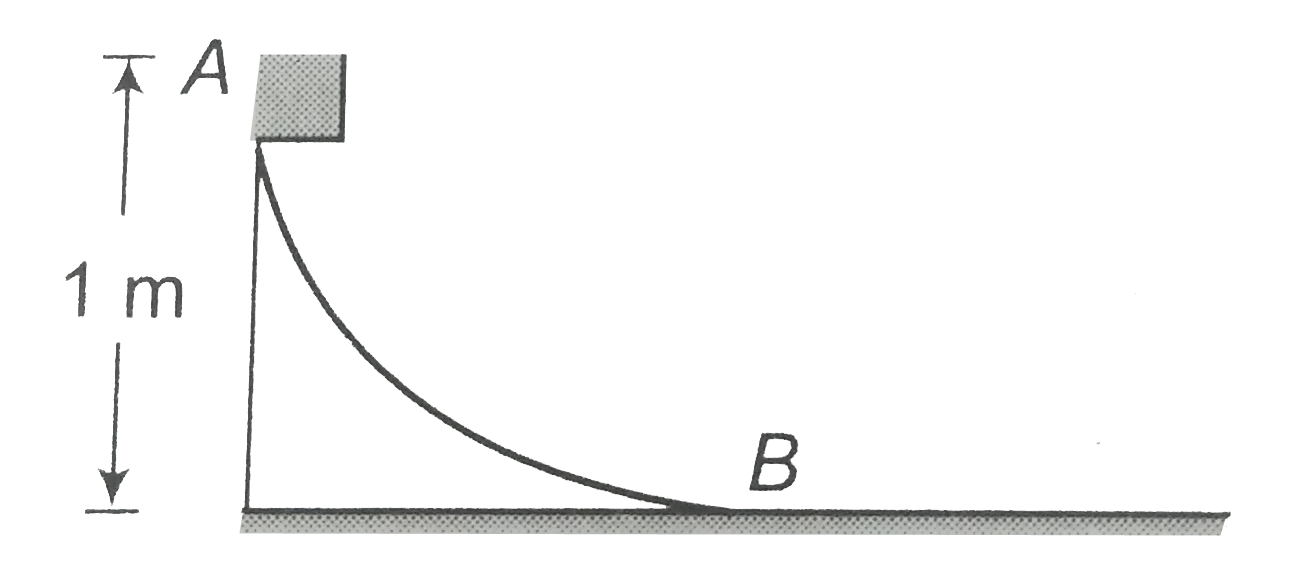
A block weighing 10 kg travels down a smooth curved track AB joined to a rough horizontal surface (see the figure.) The rough surface has a friction coefficient of 0.20 with the block. If the block starts slipping on the track from a point 1 m above the horizontal surface, how far will it move on the rough surface?View SolutionQuestion 39
A disc of mass m slides with the zero initial velocity down an inclined plane of inclination θ to the harizontal, having traveled the distance d along the horizontal plane, the disc stops. Find the work performed by the friction over the whole distance, assuming the friction coefficient μ for both the inclined and horizontal planes.View SolutionQuestion 41
A ball of mass m is moved with speed v0 at the highest point in a closed circular tube of radius R kept in the vertical plane. The cross-section of the tube is such that the block just fits in it. The block makes several oscillations inside the tube and finally stops at the lowest point. Find the work done by the tube on the block during the process.View SolutionQuestion 44
A 0.5kg block slides from the point A on a horizontal track with an initial speed 3m/s towards a weightless horizontal spring of length 1m and force constant 2N/m. The part AB of the track is frictionless and the part BC has the coefficient of static and kinetic friction as '0.22' and 0.20 respectively. If the distances AB and BD are 2m and 2.14m respectively, find total distance through which the block moves before it comes to rest completely. (g=10 m//s^(2) ).View SolutionQuestion 45
A 20 kg body is released from rest so as to slide in between vertical rails and compresses a vertical spring (k=1920Nm) placed at a distance h=1.0m from the strating position of the body. The rails offer a frictional force of 40 N opposing the motion of body. Find (a) the velocity v of the body just before striking with the spring, (b) the maximum compression of the spring and (c ) the distance h′ through which the body is rebounded up.View SolutionQuestion 46
Figure shows a spring fixed at the bottom end of an incline of inclination 370. A small block of mass 2 kg starts slipping down the incline from a point 4.8 m away from the spring. The block compresses the spring by 20 cm, stops momentarily and then rebounds through a distance of 1 m up the incline. Find a. the frictioin coefficient between the plane and the block and b. the spring constant of the spring. Take g=10ms2.
 View Solution
View SolutionQuestion 49
An engine is hauling a train of mass m on a level track at a constant speed v. The resistance due to friction is f. What power is the engine producing? What extra power must the engine develop to maintain the speed up a gradient 1 in l. What is the new total power developed by the engine develop to maintain the speed up a gradient 1 in l. What is the new total power developed by the engine ?View SolutionQuestion 50
In generation of hydroelectric power, water falls from some height and gravitational potential energy of water is converted into electric power with the help of turbine. In one such event, 7.2×104kg of water falls per hour from height 100m and half of the gravitational potential energy is converted into electric energy. How much power is generated?View SolutionQuestion 51
A person decides to use bath tub water to generate electric power to run a 40 W bulb. The bath tub is located at a height of 10 m from the ground and it holds 200 liters of water. He installs a water driven wheel generator on the ground. At what rate should the water drain from the bath tub to light the bulb? The density of water is 1000(kg)/(m3) and efficiency of generator is 80%. How long can he keep the bulb on if the bath tub was full initially.View SolutionQuestion 52
A block of mass 3 kg is pulled up on a smooth incline of angle 37∘ with the horizontal. If the block moves with an acceleration 2(m)/(s2), find the power delivered by the pulling force at time 5 s after the motion starts. What is the average power delivered during the 5.0 s after the motion starts?View SolutionQuestion 53
A body of mass m is thrown at an angle α to the horizontal with the initial velocity v0 Find (a) instantaneous power of gravity as a function of time and
(b) mean power developed by gravity in time (i) t=0 to T,
(ii) t=0 to T2, (iii) t=T2 to t=T, where T is the time of flight.View SolutionQuestion 55
A small body of mass m is given velocity v0 at point O on rough horizontal surface. (a) Find the mean power developed by the friction force during the whole time of motion if the friction coefficient is constant and equal to μ0 (b) Find the maximum instantaneous power developed by the friction force, if the friction coefficient varies as μ=μ0x, where μ0 is a constant and x is the distance from the point O.View Solution


